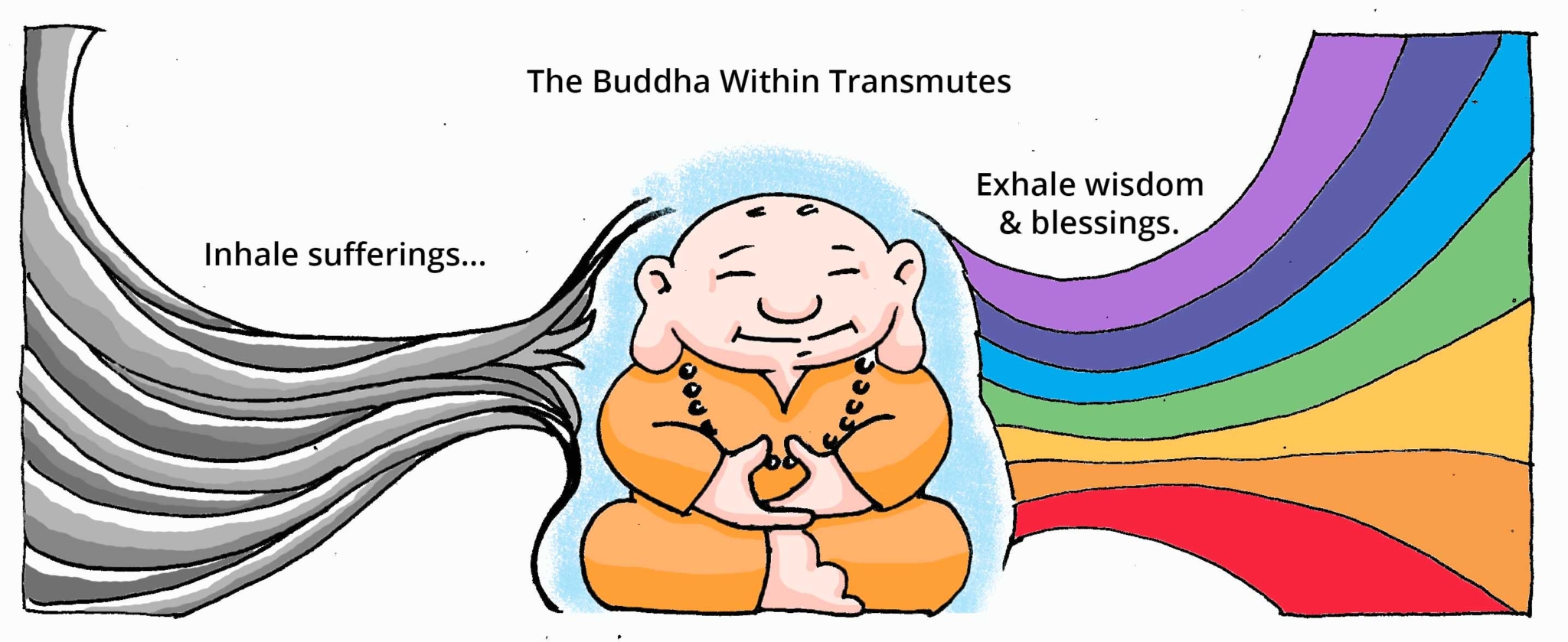I love the paradox of tonglen practice. I love it particularly because some folks these days are so focused on clearing their lives of “negative energy”. I get what they mean on the one hand. On the other, we all have all sorts of energies within us and we can spend a lot of effort keeping down the so-called bad stuff only to have it fester.
Even if we think we’re okay with difficult feelings (me for one) perhaps some part of us tightens or avoids our own pain or that of those around us. Maybe we get busy, get tidying, get drinking, get vaping, get spending. Maybe there is face, neck and shoulder tension that we get used to carrying around.
Turn things upside down with tonglen
So join me for a few minutes in turning things upside-down and let’s see what happens.
Tonglen practice, also known as “taking and sending,” reverses our usual logic of avoiding suffering and seeking pleasure. In tonglen practice, we visualize taking in the pain of others with every in-breath and sending out whatever will benefit them on the out-breath. In the process, we become liberated from age- old patterns of selfishness. We begin to feel love for both ourselves and others; we begin to take care of ourselves and others. Pema Chodron
For the basic practice of tonglen let renowned buddhist teacher Pema Chodron take you through a practice by video, or here are her text-based instructions or her similar instructions in a blog post.
Here I add a few steps that you can try as part of a tonglen practice.
Working with difficult feelings
- Settle in. Find a quiet spot to sit. Take some deep breaths. Let your system slow down and let things inside settle, as if your body is a snow globe and you can let the flakes settle.
- Find the witness. Take a step back from your feelings and notice that you can simply witness your thoughts and feelings with care, kindness and curiosity.
- Invite kindness. See if you as the witness can feel kindly and curious towards the part of you that is suffering. Pay loving attention to this hurting part whilst staying connected with the mature witness self.
- Welcome and mirror feelings. With deep kindness ask yourself “what are you feeling?” or “how are you?”. Listen closely for the response and then mirror it back: “I see you are feeling …” [hurt, angry, sad, lonely etc]. Try using the words in this list to be as specific as possible. Keep asking and naming until you have attended to all feelings currently present. (You might choose to note down the feelings).
- Breathe in, breathe out (this is the actual tonglen part). For each feeling you have named, on your next breath, breathe it in straight to your heart, welcoming it fully. On the out-breath send out a blessing to yourself and all-beings who are currently experiencing this same feeling, throughout the world. So for example on the in-breath I breathe in deep sadness, on the out-breath I send out a wish for enough grace and spaciousness to hold the sadness, or I send out a sense of comfort. Repeat until all the feeling you have named have been tended to.
- Name and mirror needs. With a deep sense of kindness, ask “what do you need?” Listen closely for the response. For each need lovingly mirror it back: “I can see that you need …” [connection, calm, to be seen, to be heard, to be loved just as you are etc].
Sending you deep peace,
Stephanie




